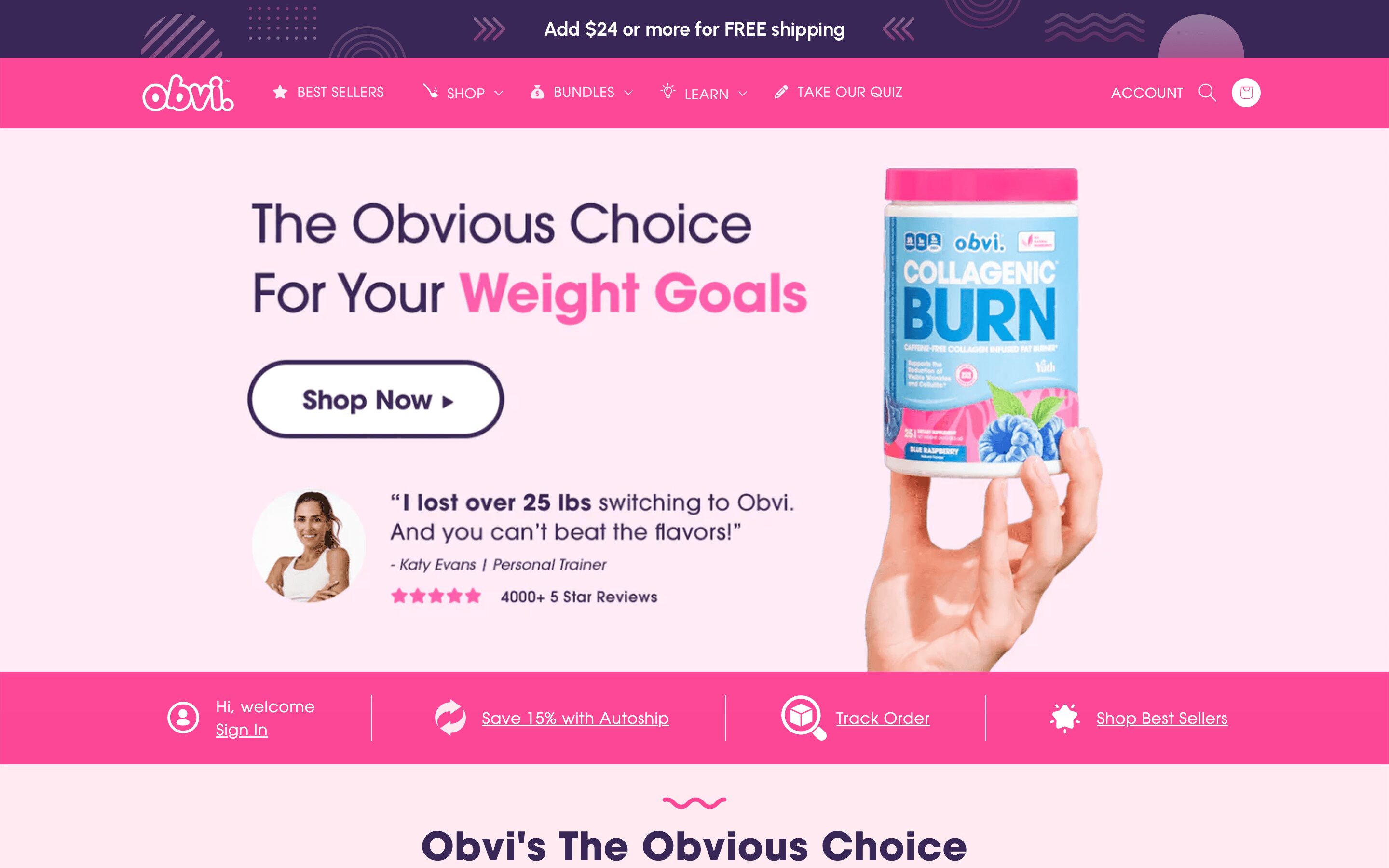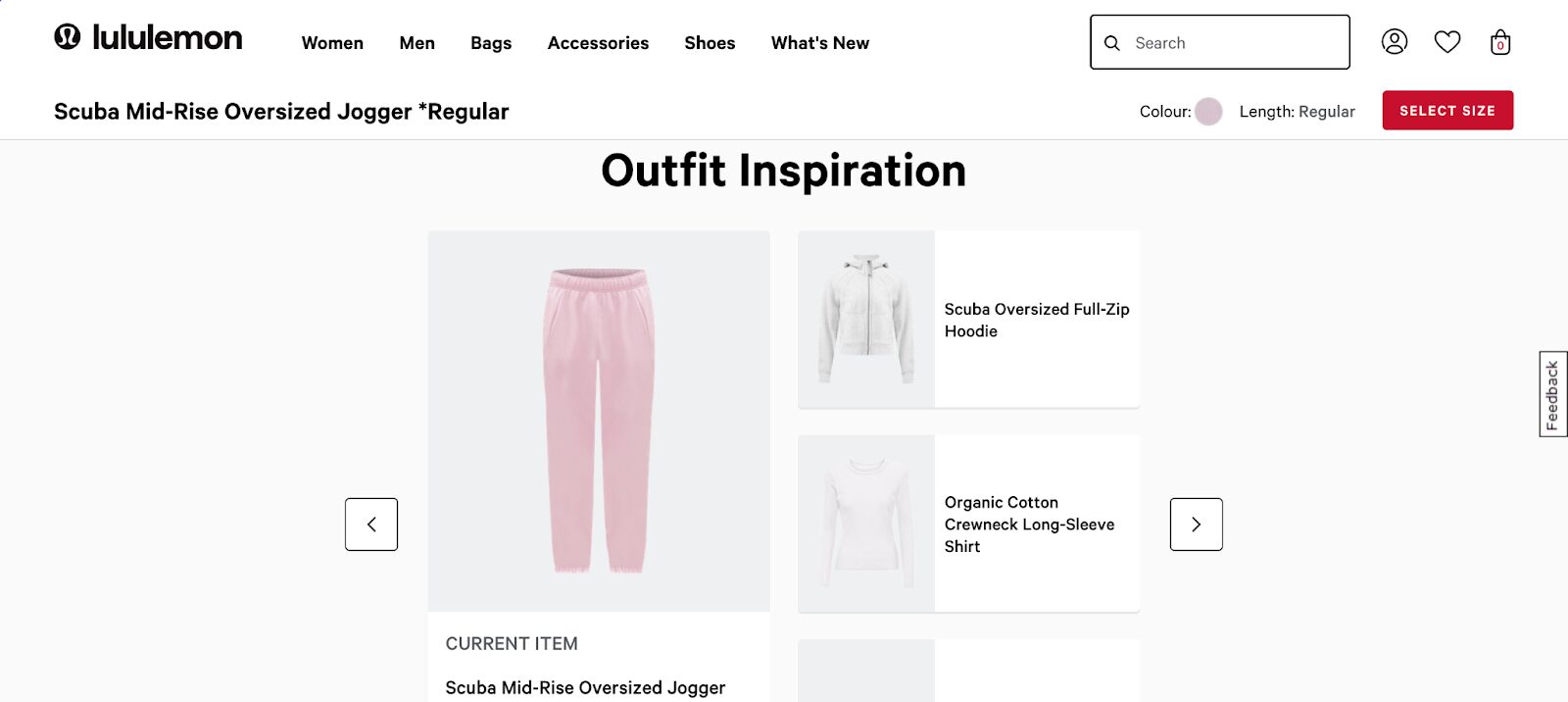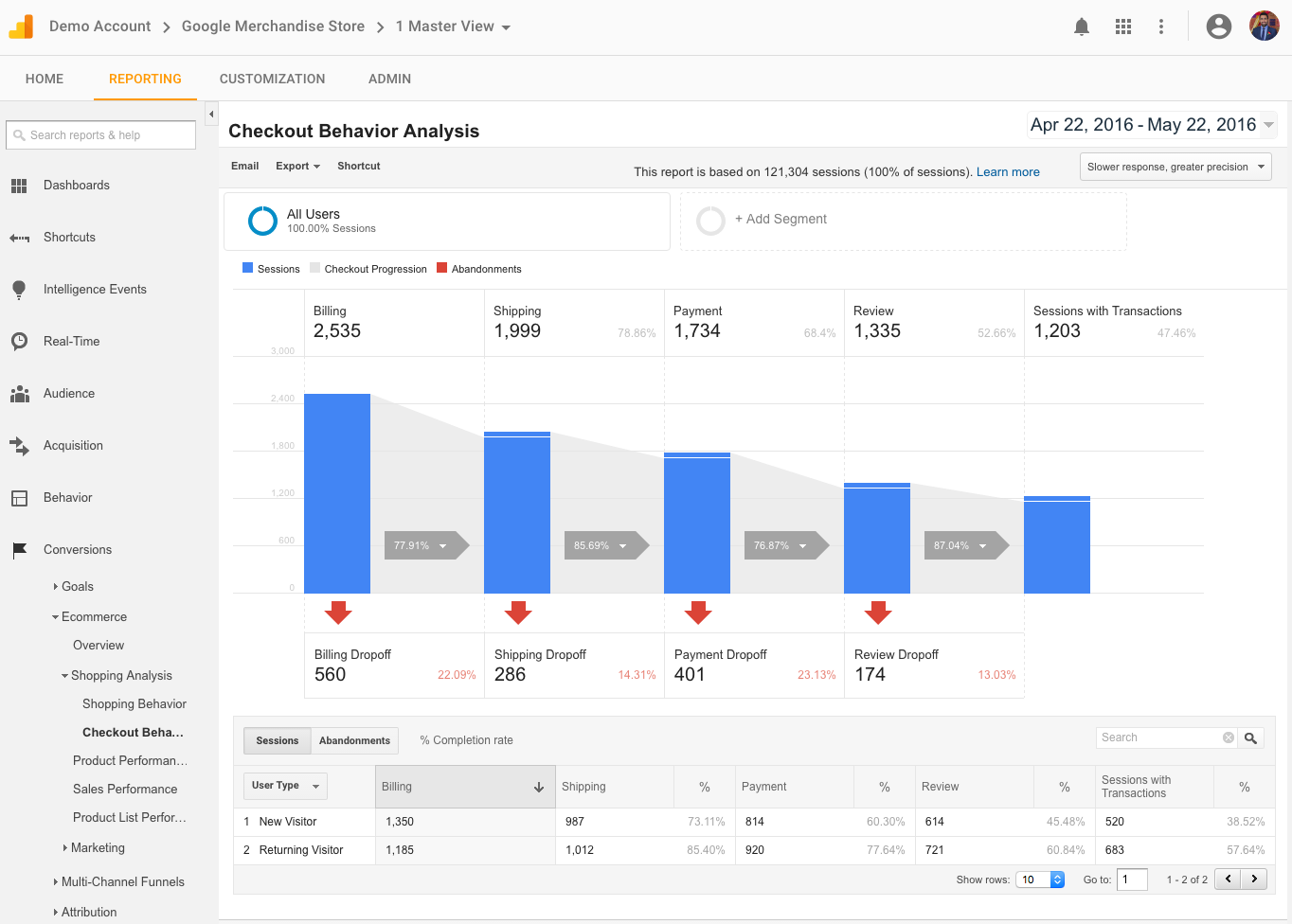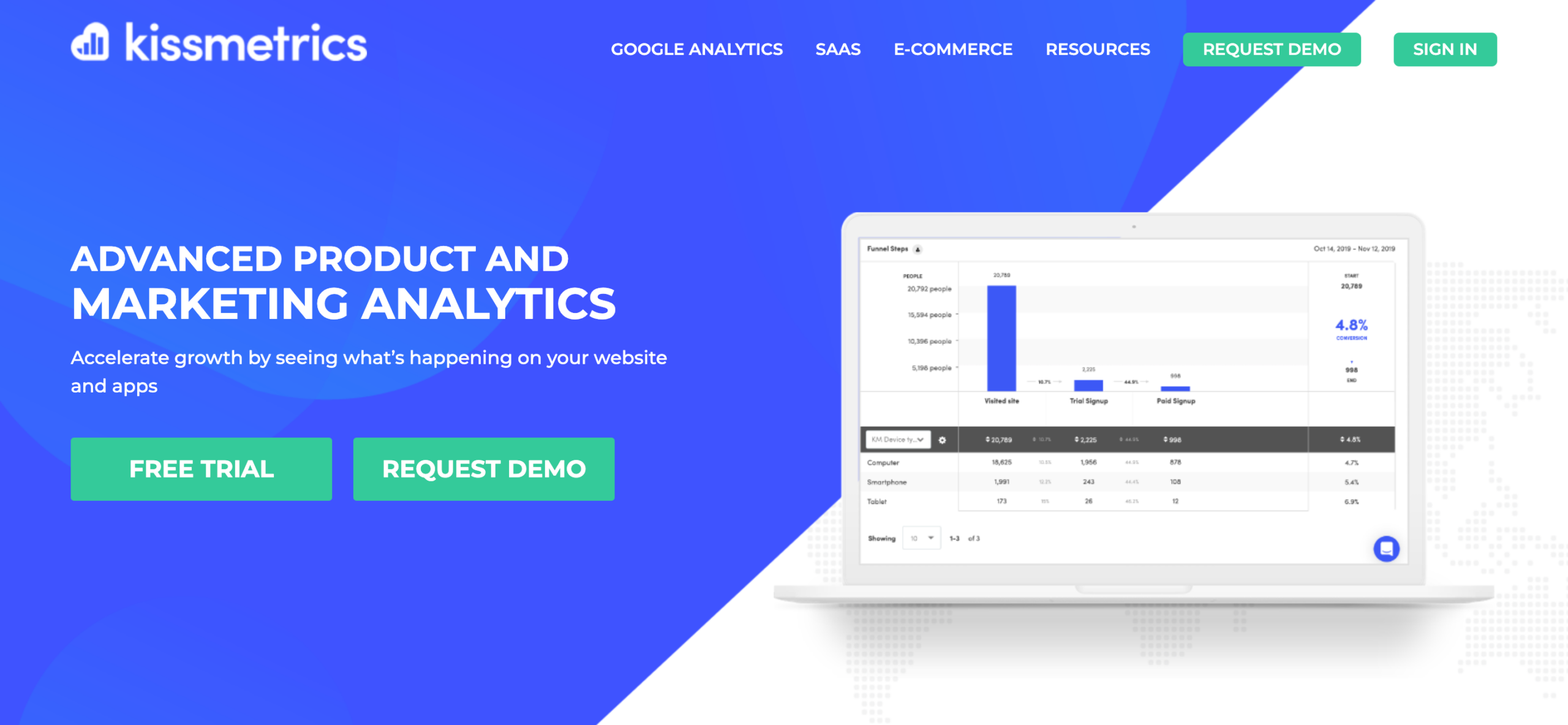- Blog
- 12 Conversion Metrics You Should Be Tracking
12 Conversion Metrics You Should Be Tracking
-
Barbara Bartucz
- Conversion
- 6 min read
Table of Contents
Conversion metrics play an important role in any digital marketing strategy, allowing store owners and digital marketers to understand how well their marketing campaigns are performing.
Keeping track of conversion metrics won’t just help you improve conversions across your sales funnel—it will also allow you to assess the ROI of your marketing efforts.
You shouldn’t focus on your conversion rate alone (though it is important). You also need to pay attention to several other conversion metrics like your click-through rate, average order value, and cost per acquisition.
In this article, we’ll take a look at twelve conversion metrics you should be tracking. Let’s get started!
What is a conversion?
A conversion is the action you want your website visitors to take, such as making a purchase or signing up for a newsletter. Your conversion rate is the percentage of visitors who take this desired action.
As you’d expect, conversion rate is the king of conversion metrics. That’s because conversion rates can tell you a lot about the success of marketing campaigns in just one number.
Calculating the conversion rate of a campaign is very simple. All you need to do is divide the total number of conversions a page or campaign generated by the total number of visitors who saw that page or campaign.
Here’s what it looks like as a formula:
Conversion rate = (Number of Conversions / Number of Visitors) * 100.

You can also combine the conversion rate of all the pages on your website to get an understanding of the average conversion rate for your entire website.
Why should I track other metrics?
It’s important to realize that not all conversions are created equal. To get a more holistic view of how your strategies are performing, additional metrics can be extremely helpful.
First of all, many digital marketers keep track of “micro-conversions,” which are small actions along the way towards a campaign’s primary conversion goal.
Second, two conversions might not bring the same amount of value to a company. For example, although two purchases will both count towards the conversion rate of a campaign, one of the customers might have spent much more money than the other one. Of course, you want to encourage more high-value purchases to increase your average revenue per purchase.
First of all, many digital marketers keep track of “micro-conversions,” which are small actions along the way towards a campaign’s primary conversion goal.
Second, two conversions might not bring the same amount of value to a company.
For example, although two purchases will both count towards the conversion rate of a campaign, one of the customers might have spent much more money than the other one.
Of course, you want to encourage more high-value purchases to increase your average revenue per purchase.
12 conversion rate metrics you should be tracking
Here are 12 conversion metrics that can help you take full advantage of your overall site traffic.
We’ll explain what each of them means and then go over how they can add to your conversion rate optimization efforts.
1. Average time spent on site
How long visitors spend on your site is one of the most important conversion metrics to keep an eye on because it measures user engagement and how compelling your content is.
The longer your average time spent on site, the more sure you can be that you’re delivering an engaging, informative experience to your target audience.
If content marketing is a big part of your digital marketing strategy, you definitely want to pay close attention to how much time users spend on each blog post. When some of your blog posts perform much better than others, you can determine what your site visitors like.
2. Cost per acquisition (CPA)
The amount of money you need to spend to acquire new customers has a direct impact on how much revenue you can expect your site to bring in.
Cost per acquisition tracks the average cost incurred to acquire a new customer or lead through a specific marketing channel or campaign.
In this way, it provides an evaluation of the efficiency of your marketing budget. A lower CPA indicates a more cost-effective acquisition strategy while a higher CPA shows that you’re paying more for the customers you acquire.
3. Click-through rate (CTR)
Click-through rate is one of those micro-conversions we mentioned earlier. It measures the percentage of people who click on an ad or link compared to the total number of people who view it.
When users click on an ad or call-to-action, it shows that your advertising campaign or content is connecting with your audience. A higher CTR signifies that your audience finds your content compelling and relevant, but a low number indicates you should probably think about making changes to your approach so you can achieve a good CTR.
4. Email subscribers
Your email subscriber figures will tell you the number of individuals who opt in to receiving emails from your business. Email is a key aspect of many online businesses’ digital marketing efforts, so it makes sense to pay attention to how well a sign-up form is converting users into subscribers.
Increasing subscriber numbers indicate that your email list is growing. A larger subscriber base provides more opportunities for engagement and conversions when you’re sending out email marketing campaigns, and can even give you a competitive advantage over others that don’t have your reach.
5. Return on ad spend (ROAS)
Your return on ad spend will tell you how much revenue you’re generating for every dollar you spend on advertising. This assesses the profitability of your advertising campaigns and tells you when you’re spending more on an ad than you’re bringing in.
ROAS can help you direct your marketing budget towards what’s working well and making you money.
If a paid search campaign has a high conversion rate and generates a lot of revenue—and personalization can be a huge factor here—it’s a sign that you should direct more of your advertising budget to that campaign. This might involve moving your resources away from other, less profitable campaigns or channels.
Since ROAS is one of the key metrics you need to be tracking, most web analytics tools will allow you to monitor yours on their platform.
6. Revenue to visitor ratio (RVR)
Revenue to visitor ratio tracks the ratio of total revenue generated to the total number of site visitors. Essentially, it tells you the average amount of money you’re making for each visitor who navigates to your website.
It’s a great way to measure how effective your website is at converting visitors into paying customers. For that reason, it’s one of the most important conversion rate optimization metrics to focus on when you’re trying to improve the profitability of your website traffic.
7. Revenue and sales
Of course, you want to be keeping track of the total income your site generates through product or service sales. It’s the ultimate indicator of business success.
Revenue and sales numbers are how you evaluate the overall financial health and performance of your business.
8. Social media engagement metrics
Metrics such as likes, shares, comments, and follows on social media platforms show that you’re successfully connecting with your target market on Facebook, Instagram, or TikTok.
For many businesses, social media is one of the major traffic sources bringing direct traffic to their site, meaning that tracking metrics related to these channels is essential. High social engagement with your brand on social media indicates a strong online community and brand loyalty.
9. Customer lifetime value
Customer lifetime value shows how much total revenue a business can expect from a single customer throughout their entire relationship. This is an often undervalued conversion metric in digital marketing.
This metric forces you to take a long-term view and prioritize customer loyalty over short-term boosts in revenue. Although it’s always great to find a new paying customer, it’s even better when that customer is likely to make more purchases in the future. That’s why it’s important to maximize customer lifetime value.
10. Bounce rate
Bounce rate is a metric that measures the percentage of visitors who land on a webpage but leave without interacting with any elements on the page, such as clicking on links, filling out forms, or making a purchase.
There are many reasons you might have a high bounce rate, from a slow page load time to visitors not finding what they expected. Since a high bounce rate can indicate that your pages lack relevance, it’s a big red flag. You should always investigate and find ways to reduce your bounce rate.
11. Cart abandonment rate
Cart abandonment rate is one of the most crucial conversion rate optimization metrics for increasing the revenue from your store. That’s because it measures the percentage of online shoppers who add items to their shopping carts but leave your website without completing their purchase.
Every single one of these customers represents lost revenue that you can try to recover using tactics like exit-intent popups and personalized recommendations. Since you don’t want to be leaking revenue because of a disconnect in the online shopping process, improving this metric should be a priority for your conversion rate optimization efforts.
12. Conversion rate (a.k.a. the conversion metric)
To wrap things up, let’s talk about the big one: conversion rate. It’s crucial to pay attention to the percentage of website visitors who complete the desired action of a campaign or web page. It’s simply essential as a bird’s eye view of how effectively your website or campaign is converting visitors into customers or leads.
4 smart tips to boost your website conversions
Let’s break down four fast, effective strategies you can implement today to turn browsers into buyers—and grow your email list while you’re at it.
1. Add a mystery discount to grow your email list
Want to spark curiosity and collect emails? Offer a mystery discount. It’s like handing your visitors a virtual scratch card—irresistible and intriguing.
Take a cue from Bearaby. Their popup doesn’t just dangle a secret deal—it also feels like a friendly convo, asking for a bit more info about the shopper in return.

This approach hits two goals at once: it captures attention and builds your email list with warm leads.
Steal the spotlight with your own mystery offer. Use these templates to get started:
2. Use a free shipping sticky bar to nudge bigger carts
Free shipping isn’t just nice to have—it’s the #1 motivator for online shoppers. People hate paying for shipping, and they’ll often spend more just to avoid it.
That’s where a sticky bar with Smart Tags comes in. It shows exactly how much more a customer needs to spend to unlock free shipping—and it updates in real time as they add items.

It’s subtle, effective, and keeps users engaged with your offer from the first click to checkout.
Try these free shipping bar templates to start boosting AOV right now:
3. Upsell and cross-sell right on your product pages
If you’re not upselling or cross-selling, you’re leaving money on the table.
Take a note from Lululemon—they showcase “complete the look” suggestions that match what’s already in the shopper’s cart. It’s a sleek, relevant way to bump up the order value without being pushy.

And don’t stop at product pages—you can use popups too. Show related products, bundle offers, or even limited-time upgrades.
Want to plug in a few upsells fast? Start here with these popups:
4. Gamify the shopping experience
Fun isn’t just for games—it’s a conversion tool. A gamified popup like a lucky wheel or scratch card grabs attention and makes the signup process exciting.
Why does it work? Because people love the thrill of possibly winning something. Plus, it turns the usual “join our list” message into an interactive, rewarding experience.
Done right, gamification can double or even triple your email signups.
Ready to boost conversions and drive leads? Use these gamified templates:
3 conversion tools to help you track conversion metrics
Monitoring conversion metrics is much easier if you have the right tools for the job.
Here are three of the best analytics tools to keep track of everything from your ad performance on search engines to your page load speeds.
1. Google Analytics

There’s a reason that Google Analytics has been one of the most popular web analytics tools for a long time.
This free service helps website owners track their website traffic and learn about their audience. Google Analytics provides reports about various aspects of website performance, including visitor numbers, traffic source, and user interactions.
2. Hotjar

Utilizing Hotjar can provide valuable insights into your website’s performance and user experience with its core features.
You can identify areas for improvement using heatmaps, which show you where users click; user recordings, which allow you to observe users interacting with your site; and feedback tools, which allow users to tell you how you can improve.
3. Kissmetrics

Like Google Analytics, Kissmetrics software reports on traffic source, pages visited, and user actions.
However, it includes a couple of useful extra features like customer journey mapping and analysis of how well specific campaigns have performed. Tracking individual user journeys across multiple sessions is a great way to understand long-term behavior.
FAQ
What is the overall goal of tracking conversion metrics?
The primary goal of tracking conversion metrics is to assess the performance and effectiveness of various marketing strategies. It helps businesses understand user behavior, optimize campaigns, and maximize ROI.
How frequently should businesses analyze their conversion metrics?
This depends on the specific goals and campaigns. Regular monitoring, which could be weekly or monthly, is advisable so you can identify trends, make timely adjustments, and ensure ongoing campaign optimization.
Can businesses use conversion metrics for both short-term and long-term planning?
Yes, conversion metrics are valuable for both short-term and long-term planning. They provide insights into immediate campaign performance and contribute to long-term strategies by identifying trends and areas for improvement.
Closing thoughts
Conversion rate metrics are your window into the performance of your website and campaigns. Whether you’re introducing a new landing page or rolling out ads on a new channel, you need to ensure that your marketing budget is being used effectively.
As we’ve seen in this article, it’s not enough to simply count how many users respond to your call-to-action and measure your conversion rates. There are a lot of other metrics that can give you a deeper understanding of your performance!
Migration has never been easier
We made switching a no-brainer with our free, white-glove onboarding service so you can get started in the blink of an eye.

What should you do next?
Thanks for reading till the end. Here are 4 ways we can help you grow your business:
Boost conversions with proven use cases
Explore our Use Case Library, filled with actionable personalization examples and step-by-step guides to unlock your website's full potential. Check out Use Case Library
Create a free OptiMonk account
Create a free OptiMonk account and easily get started with popups and conversion rate optimization. Get OptiMonk free
Get advice from a CRO expert
Schedule a personalized discovery call with one of our experts to explore how OptiMonk can help you grow your business. Book a demo
Join our weekly newsletter
Real CRO insights & marketing tips. No fluff. Straight to your inbox. Subscribe now
Barbara Bartucz
- Posted in
- Conversion
Partner with us
- © OptiMonk. All rights reserved!
- Terms of Use
- Privacy Policy
- Cookie Policy
Product updates: January Release 2025








